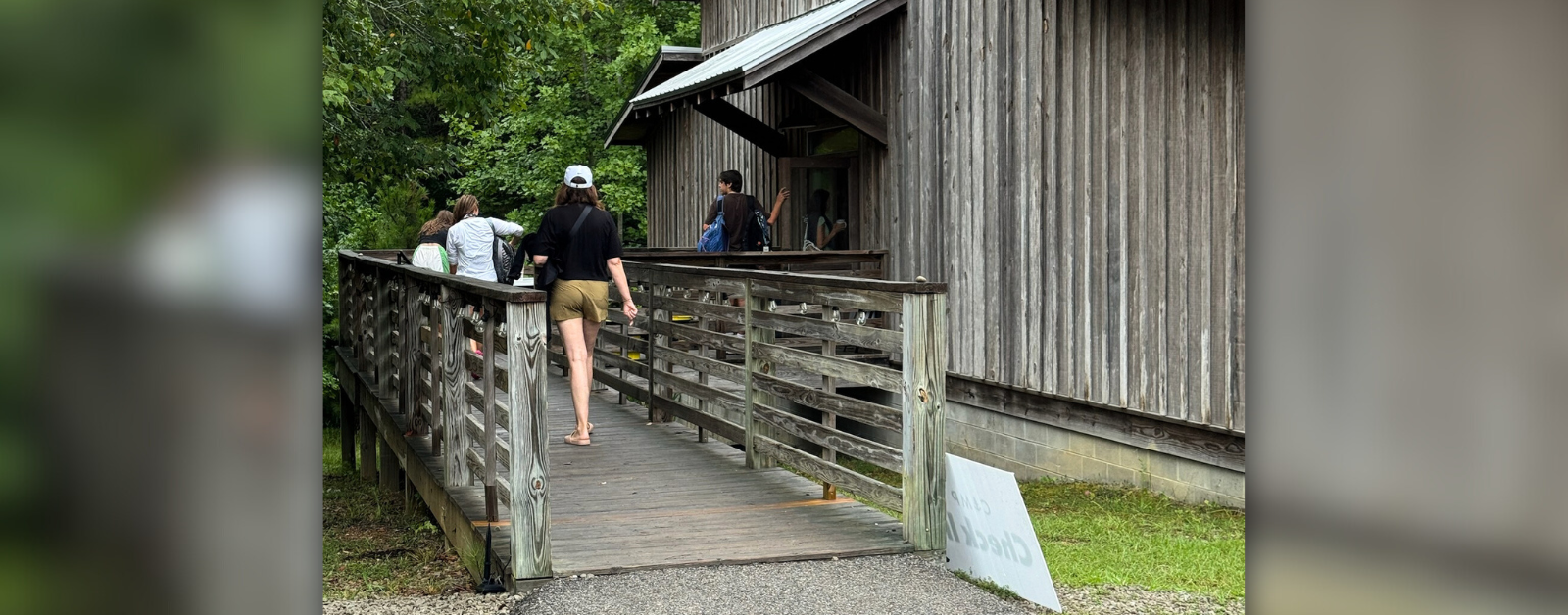The cool thing about universal design is that you don’t even notice it.
I’ve been attending Hope Heals Camp at Camp McDowell in Nauvoo, Alabama for four summers now.1 I’ve heard people say that it is a “fully accessible” space. I’ve seen the sign at the entrance to the camp that says, “The way the world could be.” But it wasn’t until this visit that I noticed the lack of staircases.

None of the main entryways to any buildings at Camp McDowell have any steps. They all offer flat surfaces so that everyone can walk, or roll, right in. The cottages are all situated so that the ground level always allows rolling directly onto a porch and into the main room, or down a gently sloping incline to the side that leads to the lower level. The entrance to one main building comes via a ramp, not a staircase. This design allows access and communicates welcome to a broad group of people, and it took me years to even notice it.
At Camp McDowell, everyone enters through the front door, everywhere.
Universal design is the idea that designers can create spaces that welcome people with disabilities and families with young children and tall people and short people and everyone in between.
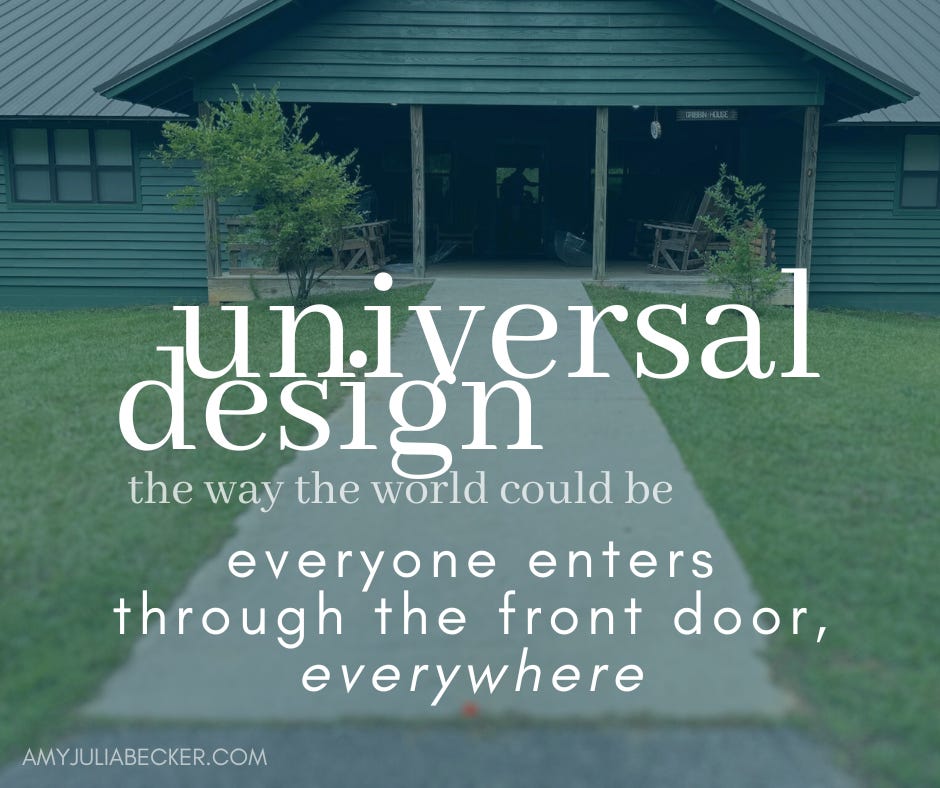
Universal Design Beyond Physical Spaces
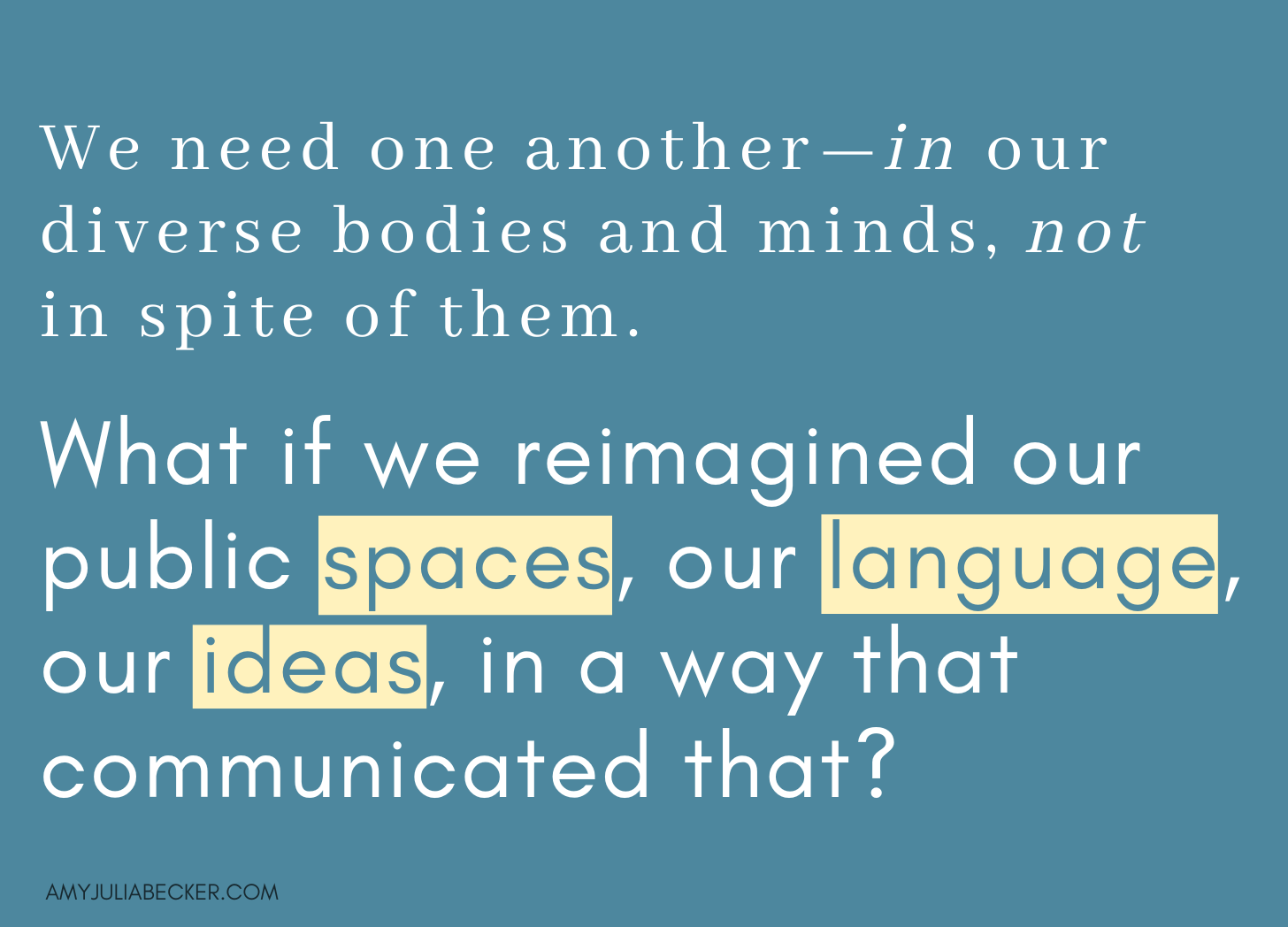
The thing is, it’s harder to retro-fit spaces than it is to design them anew. How do you communicate welcome to all people from the doors of an old cathedral with stone steps? How do you hold on to the beauty and honor the labor of those who created these spaces while also making room for a more diverse community? Is it wrong to attend schools that select for intellectual ability or to have classes within schools that group people according to ability?
I do not pretend to have the answers to these questions. And they aren’t just an intellectual exercise for us.
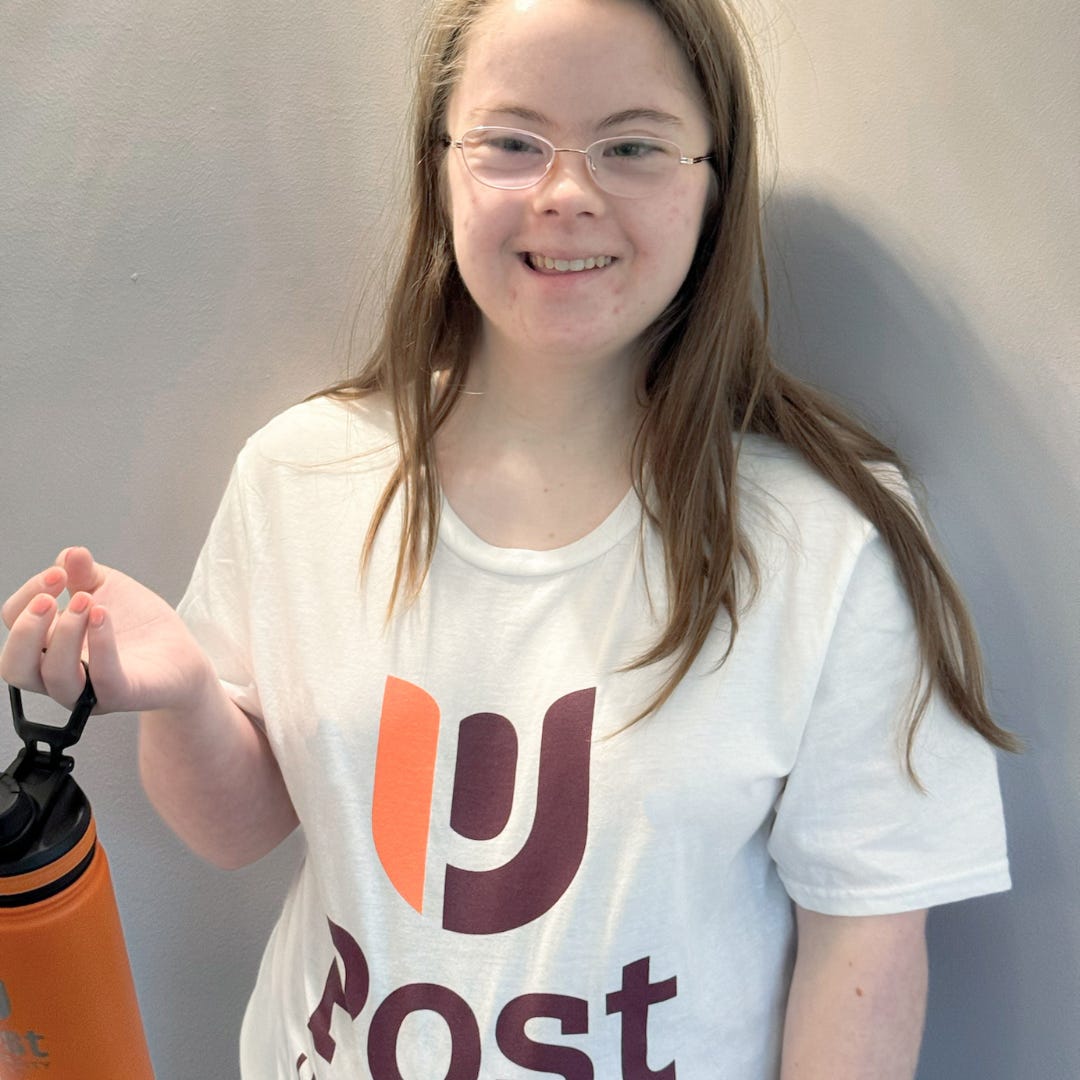
Penny, our 18-year-old daughter who has Down syndrome, is heading to a university in a few weeks where she will be integrated into some aspects of campus life, and where she also will be set apart within a cohort with other students with intellectual disabilities.3 I’m inclined to believe she will benefit from both of these settings, and I’m hopeful that the experience feels like one of “walking through the front door” alongside her typical peers even when there are alcoves within the metaphorical building where she learns only alongside her cohort.
Universal Design Matters for All of Us
For people with typical intellectual and physical ability, universal design can seem like an afterthought, or even an inconvenience. Or it can seem like something necessary for justice or kindness. But it’s more than that. It’s a way of communicating a different way of being in the world. Yes, universal design demonstrates welcome to the ones who are most likely to be excluded and overlooked, the ones who are the most vulnerable. But it also communicates a desire for a world where we are welcome as we are. It pushes against the need to get everything right and have it all together and never get old and never show weakness.
Most of us aren’t designing buildings. Most of us aren’t starting new schools. But all of us have opportunities to communicate welcome to the ones in our community who are most likely to be excluded.
All of us have opportunities to open the front door.
If you’re a parent of a child with a disability, do you wonder if it’s possible to build a team of support, to connect with people in your community who hold the front door wide open and welcome your child and your family as you are? I’ve created a workshop just for you: Reimagining Family Life with Disability.
Make an action plan and take meaningful and manageable steps toward a good future. The next live, virtual workshop begins on September 18. The online course and group curriculum are available any time. Check out the workshop and register today! And please share with a friend.
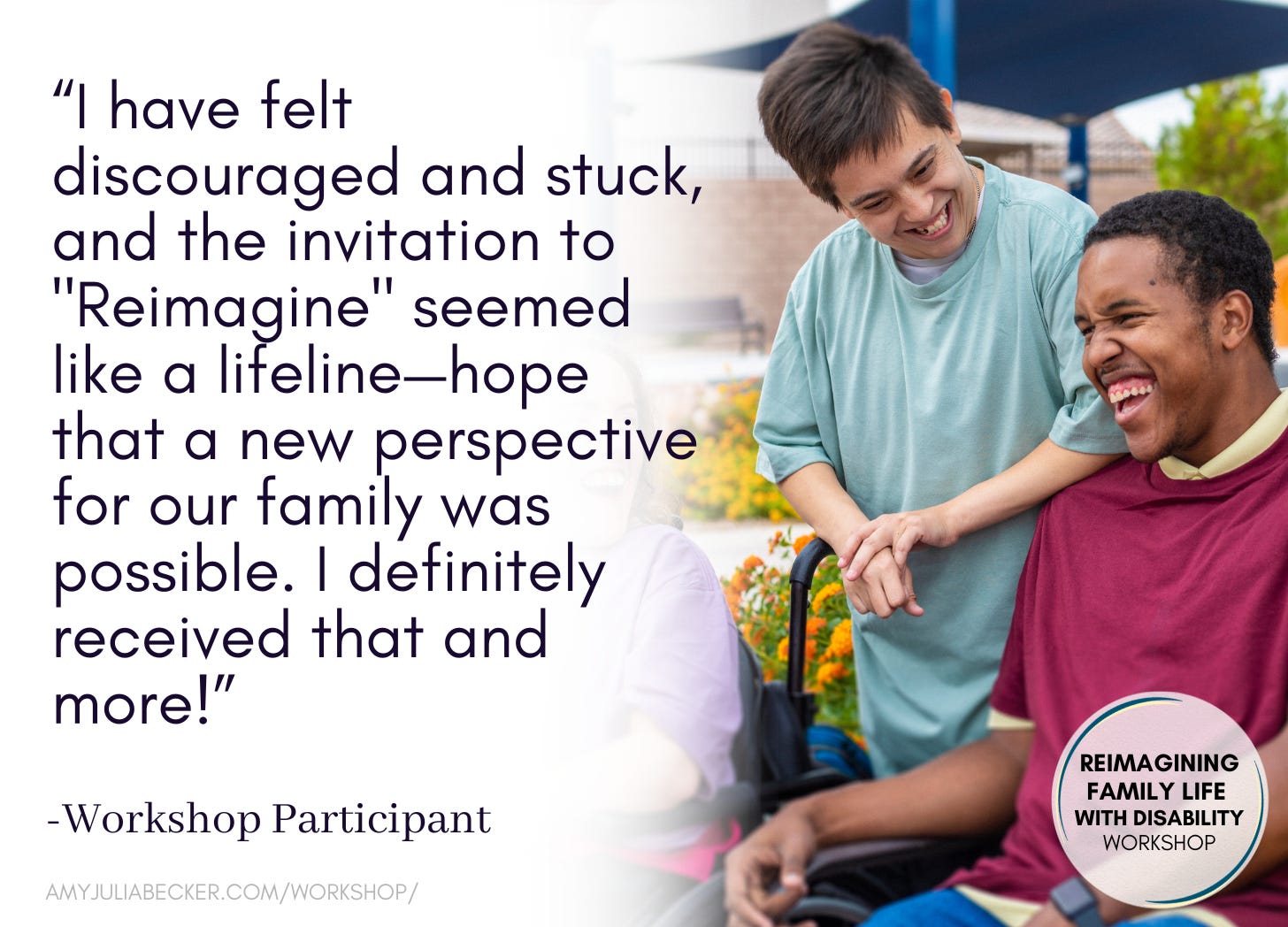
As always, I love to hear from you. Where have you seen universal design? In what ways do you wish people would “open the front door”?
Get my reflections on disability, faith, and culture delivered to your inbox each week.
Subscribe here!
MORE WITH AMY JULIA:
- Supporting Penny’s Goals
- How Politicians Talk About Disability Matters
- The Wonder of Kindness and Joy on Planet Earth
Let’s stay in touch. Subscribe to my newsletter to receive regular updates and reflections. Follow me on Facebook, Instagram, and YouTube and subscribe to my Reimagining the Good Life podcast.

